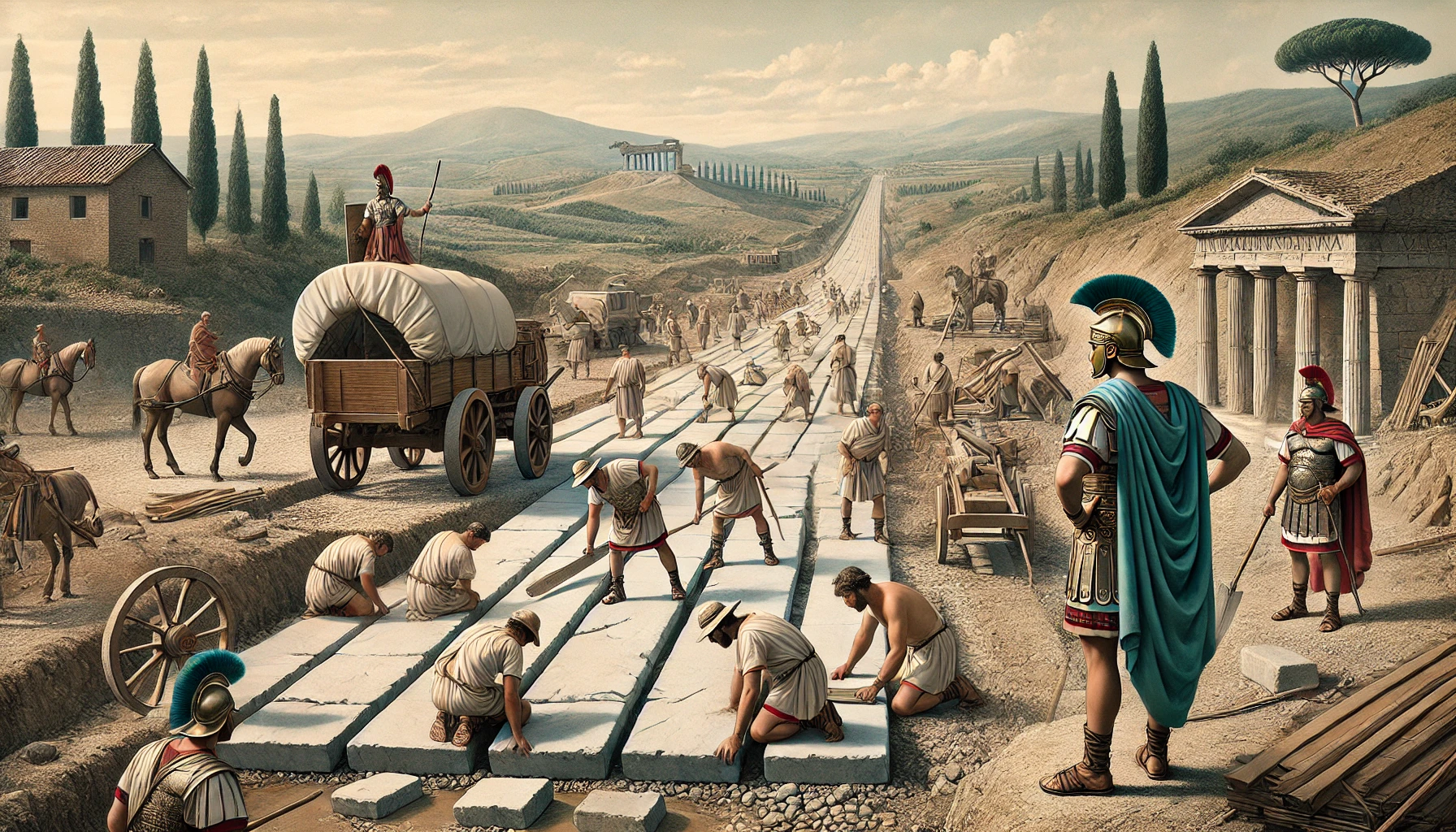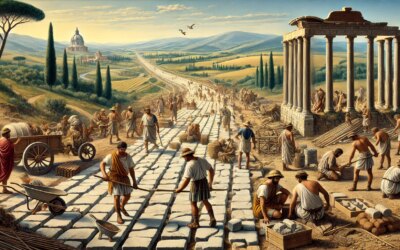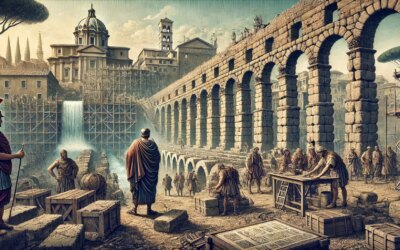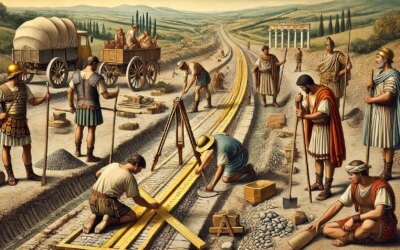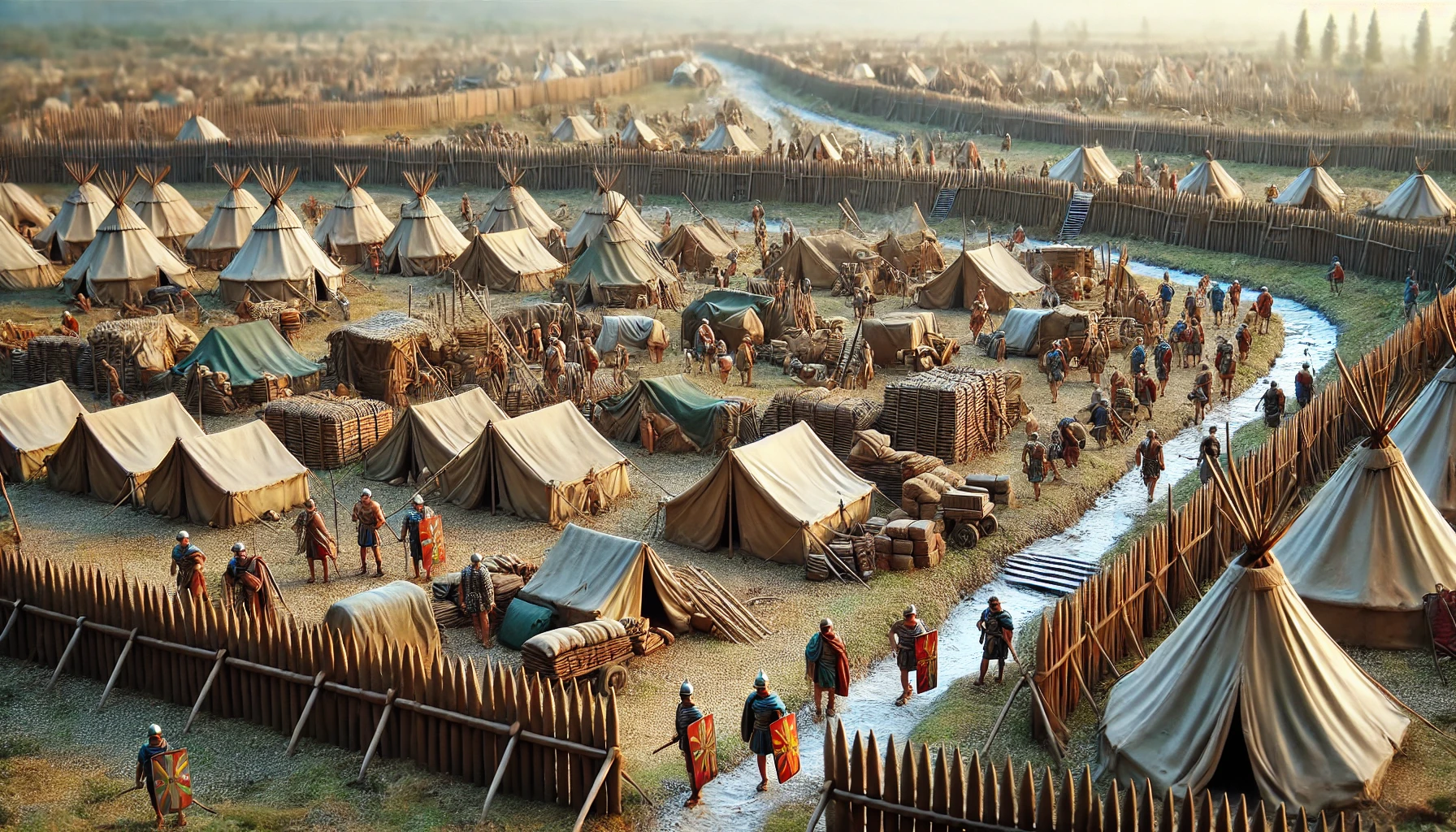The Birth of Rome’s Most Famous Road
The Via Appia, often called the “Regina Viarum” (Queen of Roads), was one of the most important infrastructure projects of ancient Rome. Constructed in 312 BCE under the guidance of censor Appius Claudius Caecus, this road transformed military movement, trade, and communication within the Republic. What made the Via Appia so revolutionary, and how did it shape the future of Roman engineering?
A Strategic Vision: Why the Road Was Built
Before the Via Appia, travel across Italy was slow and unpredictable, hindered by rough terrain and unpaved paths. Rome, seeking to strengthen its control over southern Italy, needed a reliable route for rapid troop deployment and resource transport. The road initially connected Rome to Capua, an important military and economic hub. Over time, it was extended to Brundisium (modern Brindisi), linking Rome with the eastern Mediterranean.
The Engineering Marvel of the Via Appia
The construction of the Via Appia showcased the ingenuity of Roman engineers. Unlike earlier roads, which followed natural landscapes, the Via Appia was built in a remarkably straight path, cutting through hills and marshes with bridges and drainage systems. The road consisted of multiple layers:
- Statumen: A foundation layer of large stones.
- Rudus: A thick layer of crushed stone and gravel.
- Nucleus: A compacted mixture of sand and lime.
- Pavimentum: Large, fitted basalt stones that made the surface smooth and durable.
This meticulous layering ensured the road’s longevity—sections of the Via Appia remain intact over 2,000 years later.
The Road’s Role in Roman Expansion
Beyond its engineering brilliance, the Via Appia played a crucial role in Rome’s military campaigns. It allowed legions to march efficiently, reinforcing Rome’s dominance in Italy and beyond. During the Second Samnite War (326–304 BCE), the road enabled rapid troop movements, helping Rome secure victories. Later, Julius Caesar and other generals used it to transport armies, supplies, and messages during their conquests.
The Via Appia in Commerce and Daily Life
While designed for military purposes, the Via Appia quickly became vital for commerce and civilian travel. Merchants transported goods, including grain, wine, and olive oil, between Rome and the provinces. Wealthy Romans built villas along the road, and roadside inns accommodated travelers. The road also played a role in religious pilgrimages and funerary traditions—several tombs and mausoleums still line its ancient route.
Decline and Rediscovery
With the fall of the Roman Empire, maintenance of the Via Appia declined, and sections fell into disrepair. However, its significance was never forgotten. During the Renaissance, explorers and scholars sought to restore parts of the ancient route. Today, portions of the Via Appia remain walkable, offering a glimpse into Rome’s past and its enduring engineering legacy.
Rome’s Roads: A Legacy That Endures
The Via Appia set a precedent for Rome’s vast road network, which ultimately spanned over 400,000 kilometers. The phrase “All roads lead to Rome” reflects the city’s mastery of infrastructure. Even modern highways owe much to Roman road-building techniques. The Via Appia was more than just a road—it was a statement of power, organization, and vision, proving that Rome’s engineering genius continues to shape the world today.

